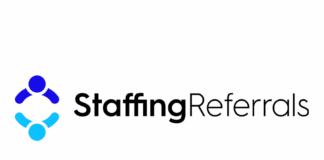
A new survey of over 1,200 senior healthcare leaders from Hallmark reveals a decisive shift toward flexible staffing models, driven by mounting cost pressures and evolving workforce preferences. The findings highlight both challenges and opportunities for staffing firms positioning themselves for future success.
Current workforce landscape
Most healthcare organizations maintain 26 to 50% of their staff as full-time employees, with travel nurses typically comprising 25% or less of the workforce. Notably, 92% already operate internal resource or float pools, indicating a foundation for more flexible models. However, the distribution of per diem and float pool usage varies significantly across organizations, suggesting room for optimization.
Addressing critical challenges
Healthcare leaders identified several key challenges in the industry, including:
- Employee burnout (67%)
- Unappealing shifts (66%)
- Expensive rates (62%)
- Shortage of qualified candidates (61%)
- Credential management complexities (49%)
Amid the struggle to attract and retain talent, 89% of organizations say that they’re under increasing pressure to cut staffing costs, which is driving new staffing approaches. One respondent noted that travel and contract nurses cost 1.5 to 2 times more than permanent staff, not including agency fees. Another reported that, for every shift filled by travel or contract nurses, labor costs increase by 20 to 30%.
Most healthcare leaders also worry about staffing shortages affecting care quality (95%) and are concerned about burnout’s impact on patient care (94%). But 95% believe better work-life balance would improve care delivery.
As part of the effort to address workforce challenges and reduce burnout, an overwhelming 97% of healthcare organizations plan to increase their use of flexible work options in the coming year (such as float pool, gig-style, per diem, and contract). This isn’t just a temporary shift — 96% expect gig-style work to become a significant part of their staffing strategy over the next five years. The trend is supported by strong demand from healthcare professionals themselves, with 98% of organizations reporting increased interest in flexible, gig-style work arrangements within the past two years.
The technology imperative
Technology is becoming crucial to enabling this workforce transformation. The vast majority (94%) of organizations already use platforms to manage flexible staffing, and the same percentage believe they would benefit from technology enabling nurses to self-schedule. This presents a clear opportunity for staffing firms to differentiate through technological innovation.
With 92% of healthcare organizations actively exploring alternative staffing models, including flexible schedules and gig or local float pool roles, the industry is at a pivotal point. Successful staffing firms will be those that can provide flexible solutions while addressing cost concerns and maintaining quality of care. The data suggests that technology-enabled, flexible staffing models that prioritize worker preferences while managing costs will define the future of healthcare staffing.





